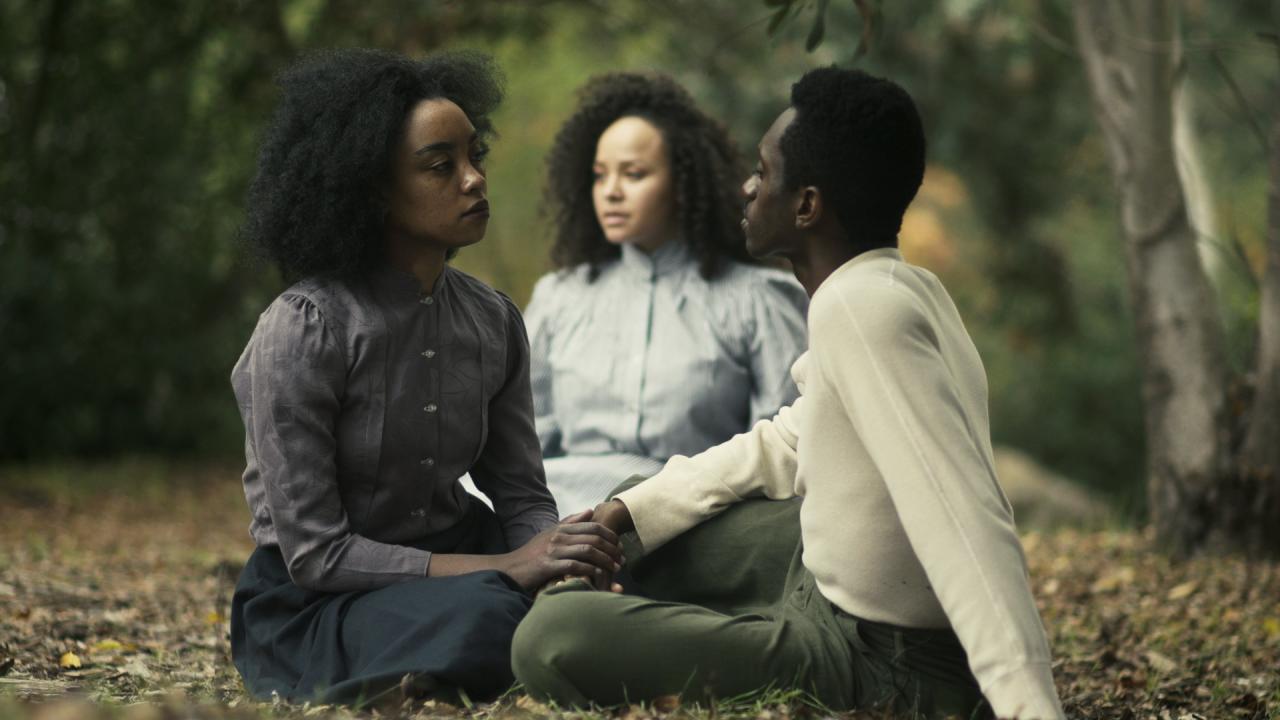Reporters wishing to find stories for Black History Month can look to University of California, Davis. Here is a sampling, in chronological order, of art events that feature race or multiracial themes, ranging from visual art, to lectures, to performance. They are open to the public. Please contact us if you’d like to know more.
Groundbreaking Artist Jennifer Packer Speaks Thursday
Thursday, Feb. 10, 4:30-6 p.m., Wright Hall, Main Theatre, UC Davis
The California Studio: Manetti Shrem Artist Residencies in the UC Davis Department of Art and Art History welcomes acclaimed painter Jennifer Packer to campus.
Her art sometimes reflects on instances of institutional violence toward African Americans.
Blessed Are Those Who Mourn (Breonna! Breonna!) refers to the police killing of Breonna Taylor in her apartment in 2020. It is not a painting of Taylor, but of a man lying on a couch. Say Her Name, from 2017, commemorates the life of Sandra Bland, who died in police custody after being arrested during a traffic stop. The painting is a floral still life, which is another type of work Packer does frequently.
Packer has solo exhibitions at the Whitney Museum of American Art in New York and the Museum of Contemporary Art in Los Angeles. She is working with students at UC Davis in addition to giving a public talk this month.
More about The California Studio.
Film installation shows struggles of community
Now through June 19, Manetti Shrem Museum
Protest can take varied forms, from active demonstrations to bearing witness to lost histories. Dance of Malaga, a film installation by Theaster Gates in “From Moment to Movement: Picturing Protest in the Kramlich Collection,” (on view through June 19), examines the little-known history of Malaga, a small island off the coast of Maine settled by an autonomous multiracial community.
The inhabitants were evicted by the governor in 1912 and dispersed. Gates uses film to create a speculative future, engaging in the recovery of a group that was marginalized both in its lifetime and by history. Interspersing dance, musical interludes, commercials, home videos, historical texts and decrees, and scenes from the 1959 film Imitation of Life, the artist imagines what might have been had the people of Malaga been able to remain. In doing so, he envisions a world that operates outside systemic racism, while also reminding viewers of the violent legacies of slavery, Jim Crow, anti-miscegenation law (laws prohibiting people of different races from having a relationship) and other forms of oppression.
More information is on the Jan Shrem and Maria Manetti Shrem museum’s website here.
Artist Talk: Kota Ezawa on current events and images
Thursday, Feb. 17, 4:30 p.m., Manetti Shrem Museum
Kota Ezawa’s work explores the appropriation and mediation of current events and images, referencing sources from the news, art history and popular culture. His work National Anthem (2018) uses television footage, presenting the actions of various players, coaches and Colin Kaepernick, and allowing the spectator to experience this act of personal and communal protest without comment or context. Ezawa said, “As a sports fan, I understood the civic courage that the players displayed in that moment, risking their careers for the benefit of a social cause. It highlighted the connection between patriotism and protest — or that protest can be a form of patriotism.”
The work was included in the 2019 Whitney Biennial and is on view in “From Moment to Movement: Picturing Protest in the Kramlich Collection.”
The talk is organized by the museum, co-sponsored by the Department of Art and Art History’s Art Studio Visiting Artist Lecture Series. More information here.
Opera: Hate, hope and incarceration addressed in Beethoven’s Fidelio
Prison choirs play a role
Saturday, Feb. 19, 7:30 p.m., Mondavi Center for the Performing Arts
In this adaptation of Beethoven’s Fidelio, a Black activist is wrongfully incarcerated. His wife, Leah, disguises herself to infiltrate the system and free him. But when injustice reigns, one woman’s grit may not be enough to save her love.
Fidelio’s live cast of five singers and seven musicians are joined by a prerecorded virtual chorus of more than 100 incarcerated singers from six prison choirs in the United States. This daring work pits corruption against courage, hate against hope.
Find out why they opted to mix both American dialogue and German arias, and more, in this interview with Director Ethan Heard. And catch a post-performance Q and A with Heartbeat Opera at 9 p.m.
Heartbeat Opera video here.
More information and tickets here.
Media Resources
High-resolution photos available upon request.
Media Contacts:
- Karen Nikos-Rose, News and Media Relations, 530-219-5472, kmnikos@ucdavis.edu
- Laura Compton, Manetti Shrem Museum, llcompton@ucdavis.edu
- Rob Tocalino, Mondavi Center, rtocalino@ucdavis.edu
- Jeffrey Day, College of Letters and Science (California Studio), jaaday@ucdavis.edu
